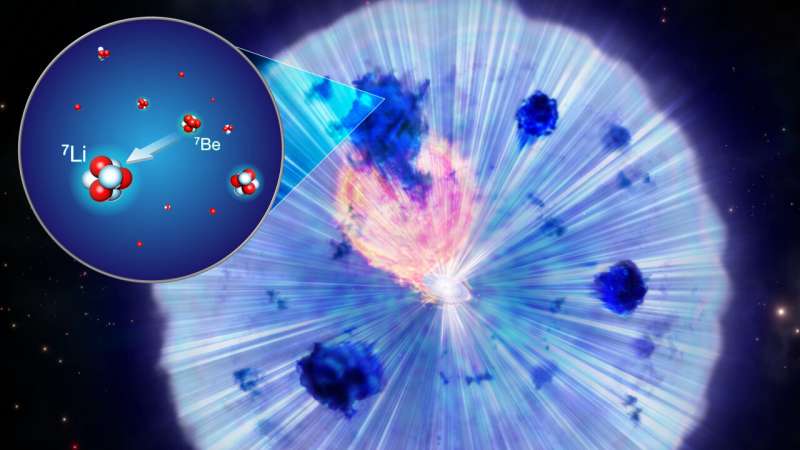This is an important result for understanding both the explosion mechanism of classical novae and the overall chemical evolution of the universe.
In the modern world, lithium is used in the rechargeable batteries powering smartphones and other devices. It was thought that most of the lithium found on Earth, and the rest of the universe, was originally produced in classical nova explosions. Observations of the classical nova V339 Del using the Subaru Telescope supported this theory, providing the first observational evidence of large amounts of lithium being produced and ejected into space ("Classical Nova Explosions are Major Lithium Factories in the Universe" on February 18, 2015).
Now, a team led by Akira Arai, a researcher at Koyama Astronomical Observatory of Kyoto Sangyo University, used the Subaru Telescope's open-use observation program to study V5669 Sgr, a classical nova that appeared in Sagittarius in 2015. This was only the eighth time this type of study has been successfully conducted. Four of those eight, including the first, were conducted using the Subaru Telescope. This time is remarkable because the estimated lithium production is only a few percent of the production seen in the others. This indicates that there is a large diversity in novae. The fact that some novae produce only a small amount of lithium suggests that other objects, such as supernovae, may make important contributions to lithium production in the universe.
A classical nova occurs in a close binary system consisting of a white dwarf and a companion star. Gas from the companion star accumulates on the white dwarf, increasing the temperature and pressure on the surface, leading to explosive nucleosynthesis. During the explosion, an unstable isotope of beryllium (7Be) is formed. This beryllium decays into lithium with a half-life of 53 days.
The research group observed the absorption lines of this beryllium in the spectrum of the nova about one month after the explosion. These absorption lines are in the ultraviolet region and are easily affected by absorption by the Earth's atmosphere, making ground-based observations extremely difficult. Therefore, the observations require a large telescope with a spectrometer with high sensitivity in ultraviolet region located at high altitude, where the air is thin. The Subaru Telescope is the only telescope that can observe lithium synthesis in novae from the northern hemisphere. It is hoped that the Subaru Telescope will continue to be at the forefront of this field and will help us to understand how the elements were synthesized and evolved to create the material-rich universe in which we live. To maximize scientific return and enable researchers to pursue their own original investigations into topics like this, the Subaru Telescope offers an open-use observation program where Japanese researchers can apply for observing time.
These results will be published in the Astrophysical Journal on July 2021 as Arai et al. "Detection of 7Be II in the Classical Nova V5669 Sgr (Nova Sagittarii 2015 No. 3)."



